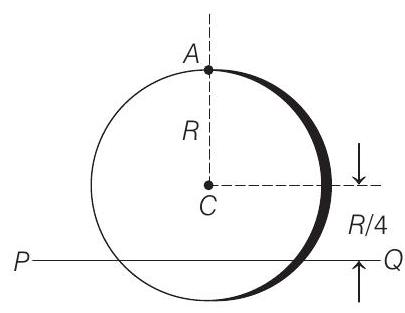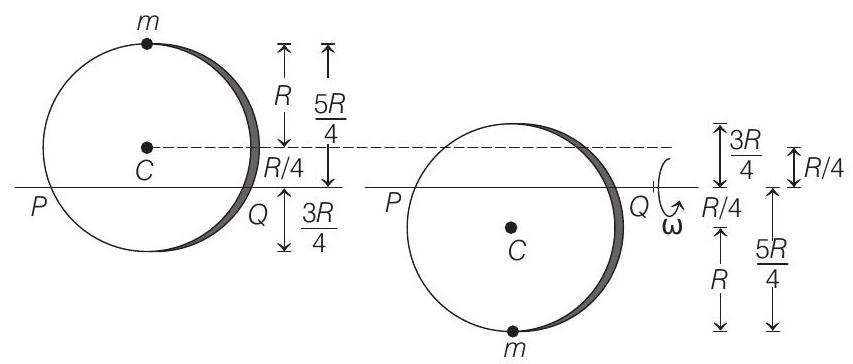Rotation 5 Question 26
38. A uniform circular disc has radius
 at a distance
at a distance
(1998, 8M)
Show Answer
Answer:
Correct Answer: 38.
Solution:
- Initial and final positions are shown below.
Decrease in potential energy of mass
Decrease in potential energy of disc

Therefore, total decrease in potential energy of system
Gain in kinetic energy of system
where,
axis
- moment of inertia of mass
From conservation of mechanical energy,
Decrease in potential energy
Therefore, linear speed of particle at its lowest point






